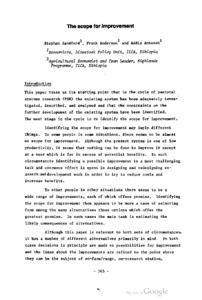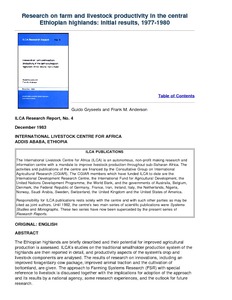Location
Vision, mission and strategy
ILRI's strategy 2013-2022 was approved in December 2012. It emerged from a wide processof consultation and engagement.
ILRI envisions... a world where all people have access to enough food and livelihood options to fulfil their potential.
ILRI’s mission is... to improve food and nutritional security and to reduce poverty in developing countries through research for efficient, safe and sustainable use of livestock—ensuring better lives through livestock.
ILRI’s three strategic objectives are:
- with partners, to develop, test, adapt and promote science-based practices that—being sustainable and scalable—achieve better lives through livestock.
- with partners,to provide compelling scientific evidence in ways that persuade decision-makers—from farms to boardrooms and parliaments—that smarter policies and bigger livestock investments can deliver significant socio-economic, health and environmental dividends to both poor nations and households.
- with partners,to increase capacity among ILRI’s key stakeholders to make better use of livestock science and investments for better lives through livestock.
This is ILRI’s second ten-year strategy. It incorporates a number of changes, many based on learning from the previous strategy (2000–2010, initially produced in 2000 and modified in 2002), an interim strategy (2011–2012) and an assessment of the external and internal environments in which the institute operates.
Members:
Resources
Displaying 1106 - 1110 of 1152The importance of wealth effects on pastoral production: A rapid method of wealth ranking
Discusses the importance of wealth differences among producers in traditional pastoral production systems, describing a rapid method, dependent on informants, for determining the wealth rank of producers within a given community in order to stratify a population of producers before sampling.
The scope for improvement
Discusses the need for identifying sociological and economic possibilities for improvement in pastoral production systems, mentioning the major steps involved, particularly, identification of potential improvements, prediction of their likely impact on net production & quality of life; prediction of the probability of adoption; and assessment of the rapidity with which the improvements will bear fruit.
The development experience
Discusses pastoral systems research (PSR) within the framework of the experience of livestock and pastoral development in Africa during the last 50 years, analyzing data on livestock population & productivity in relation to the welfare of pastoralists; and examines previous efforts in pastoral development relevant to PSR approach.
Sarite cooperative ranch: Cattle growth and production characteristics 1981 and 1982
Analyzes statistically, results of weighings made on two cattle groups at the Sarite cooperative ranch in the southern rangelands of Ethiopia & used as a fattening area to determine effects of place of origin, herdsmen group and sex (bull or castrate) on initial liveweight, weight gain & performance of animals, their purchase & sales prices and profits realised and calculates optimum liveweights at purchase & sale to maximize profits. Includes recommendations on the basis of the results.
Research on farm and livestock productivity in the central Ethiopian highlands: Initial results, 1977-1980
Describes the Ethiopian highlands assessing their potential for improved agricultural production; reports ILCA's studies on the traditional smallholder production system of the highlands; and analyzes productivity aspects of the system's crop and livestock components. Discusses the approach to farming systems research (FSR) along with the implications for adoption of the approach and its results by a national agency, some research experiences and the outlook for future research.






